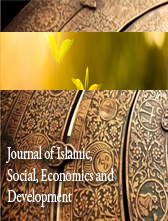THE POSSIBILITY OF DEVELOPING WAQF-BASED CHILDCARE CENTERS: A LITERATURE REVIEW
Abstract
Studies on the factors that determine women's participation in the labor market have been conducted centuries ago. Among the factors that are also discussed are child related factors; number of children, age of children, child health and child care costs. Some studies have also shown that rising living costs, including high childcare costs, have resulted in many women leaving the labor market. Losing women on the labor market will have an impact on the country to lose its human capital and the wealth of the country. Accordingly, in many developed and developing country include Malaysia, the government provide financial assistance such as subsidies, tax deductions and financial assistance to help the households with children. However, limited government resources, and more focused on economic growth in the region, restrict the assistance it can provide to households. To those in need, therefore, there are many private and charitable sources of funding that exist. For Muslims, there are numerous philanthropic organizations that regularly collect various charity funds in different forms, such as Zakat, Waqf, Sadaqah, and Hibah. Specifically in Waqf, the use of the Waqf fund has been found to be of great help to peoples in many aspects. Therefore, this study will focus on the possibility of Islamic law to implement Waqf in childcare. This study's input is gathered through the outcome and finding of previous studies, besides the Quran and the Hadith as the main guidance. The conclusion that can be drawn from this research is; Waqf for childcare is possible and can be accomplished through Waqf asset integration.













